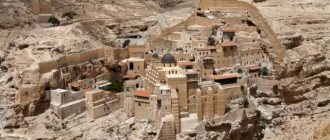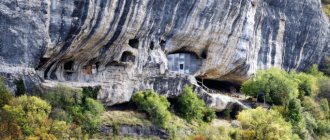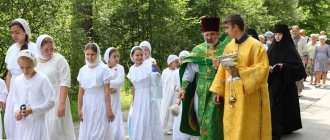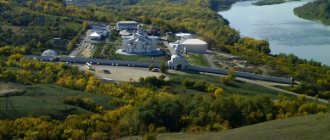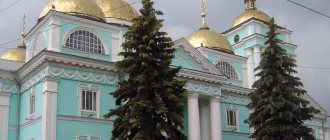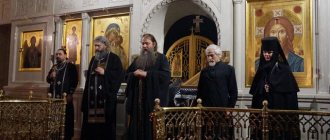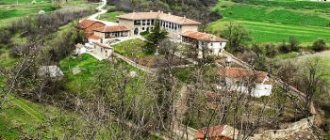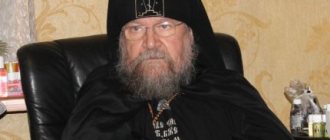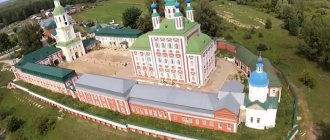Mir
Palestine of the Lavra of Saint Sava The map is loading...
{"format":"leaflet","minzoom":false,"maxzoom":false,"limit":50,"offset":0,"link":"all","sort":[""], "order":[],"headers":"show","mainlabel":"","intro":"","outro":"","searchlabel":"\u2026 \u0441\u043b\u0435\ u0434\u0443\u044e\u0449\u0438\u0435 \u0440\u0435\u0437\u0443\u043b\u044c\u0442\u0430\u0442\u044b","default":"","import-annotation":false,"width ":"auto","height":"350px","centre":{"text":"","title":"""link":"""lat":31.70493940000000065992935560643672943115234375,"lon": 35.33131420000000133541107061319053173065185546875,"icon":""},"title":"","label":"","icon":"","lines":[],"polygons":[],"circles":[ ],"rectangles":[],"copycoords":false,"static":false,"zoom":8,"defzoom":14,"layers":["OpenStreetMap"],"image layers":[] ,"overlays":[],"resizable":false,"fullscreen":true,"scrollwheelzoom":true,"cluster":false,"clustermaxzoom":9,"clusterzoomonclick":true,"clustermaxradius":80, "clusterspiderfy":true,"geojson":"","clicktarget":"","showtitle":true,"hidenamespace":false,"template":"","userparam":"","activeicon": "","pagelabel":false,"ajaxcoordproperty":"","ajaxquery":"","locations":[{"text":"\u003Cb\u003E\u003Ca href=\"/palomnik/%D0% 9B%D0%B0%D0%B2%D1%80%D0%B0_%D0%A1%D0%B0%D0%B2%D0%B2%D1%8B_%D0%9E%D1%81%D0%B2% D1%8F%D1%89%D0%B5%D0%BD%D0%BD%D0%BE%D0%B3%D0%BE\» title=\»\u041b\u0430\u0432\u0440\u0430 \u0421\ u0430\u0432\u0432\u044b\u041e\u0441\u0432\u044f\u0449\u0435\u043d\u043d\u043e\u0433\u043e\»\u003E\u041b\u0430\u0432\u0440\u 0430\u0421\u0430\u0432\ u0432\u044b \u041e\u0441\u0432\u044f\u0449\u0435\u043d\u043d\u043e\u0433\u043e\u003C/a\u003E\u003C/b\u003E\u003Chr /\u003E\u00 3Ca href=\"/palomnik /%D0%A1%D0%B2%D0%BE%D0%B9%D1%81%D1%82%D0%B2%D0%BE:%D0%90%D0%BD%D0%BD%D0%BE %D1%82%D0%B0%D1%86%D0%B8%D1%8F\" title=\"\u0421\u0432\u043e\u0439\u0441\u0442\u0432\u043e:\u0410\u043d\u043d\ u043e\u0442\u0430\u0446\u0438\u044f\»\u003E\u0410\u043d\u043d\u043e\u0442\u0430\u0446\u0438\u044f\u003C/a\u003E: "'\u041b\u0 430\u0432\u0440 \u0430 \u0421\u0430\u0432\u0432\u044b \u041e\u0441\u0432\u044f\u0449\u0435\u043d\u043d\u043e\u0433\u043e"' \u044f\u0432\u04 3b\u044f\u0435\u0442\u0441 \u044f \u043e\u0434\u043d\u0438\u043c \u0438\u0437 \u0434\u0440\u0435\u0432\u043d\u0435\u0439\u0448\u0438\u0445 \u043e\u043 1\u0449\u0435\u0436\u0438\u0442 \u0435\u043b\u044c\u043d\u044b\u0445 \u043c\u043e\u043d\u0430\u0441\u0442\u044b\u0440\u0435\u0439, \u043e\u0431\u0438\u0442 \u0435\u043b\u044c \u043e\ 484 \u0433\u043e\u0434\u0430 42\u044b\u043c\u0421\u0430\u0432 \u0432\u043e\u0439","title":"\u041b\u0430\u0432\u0440\u0430 \u0421\u0430\u0432\u0432\u044b \u041e\u0441\u0432\u044f\u0449\u0435\ u043d\u043d\ u043e\u0433\u043e","link":"""lat":31.70493940000000065992935560643672943115234375,"lon":35.33131420000000133541107061319053173065185 546875,"icon":""}],"imageLayers":[]}
32.083738; 35.321847
Palestine, West Bank
Palestine
Lavra of Saint Sava the Consecrated
is one of the oldest communal monasteries, the monastery was founded around 484 by Saint Sava. Located in the West Bank of the Jordan River, in the Judean Desert, in the Kidron Valley. The monastery is under the jurisdiction of the Jerusalem Orthodox Church. The Greek name is Λαύρα Σάββα τοῦ Ἡγιασμένου, the Arabic name is دير مار سابا, in Hebrew מנזר מר סבא — (mon aster Mar Saba).
History[[edit]h2>
The monastery was founded by Rev. Savva in the Judean Desert. The first building was a cave church, built after disciples began to settle around the hermit. The monastery enjoyed the support of Emperor Justinian I; under him, fortified monastery walls and a watchtower called Justinian's Tower were built. By the end of Saint Sava’s life, up to 5,000 monks lived in the monastery he founded. In the 8th century, Saint John of Damascus took monastic vows in the Lavra and lived for about 50 years; the cave in which he lived and his tomb have been preserved. The monastery has a tomb in which the relics of monks killed during the Persian invasion in 614 are kept; The martyrdom of the mentioned monks was described in the introductory chapter of “Pandects” by the witness of this massacre, the Monk Antiochus of Palestine.
At the beginning of the 12th century, the Lavra was visited by the Russian pilgrim Abbot Daniel, who wrote about it: “The Lavra of St. Sava is located in the Valley of Jehoshaphat, in the Valley of Weeping, which begins from Jerusalem: coming from Gethsemane, this valley passes through the Lavra and reaches the Sea of Sodom. The Lavra of St. Sava was created by God miraculously and indescribably in words. The stream once flowed terrible and very deep and was dehydrated, its banks were high, and on those cliffs the cells were molded - stuck and established by God in some miraculous and terrible way. At that height there are cells on both banks of that terrible stream and they are molded on the rocks, as if the stars were fixed in the sky. There are three churches. Among those cells to the west there is a wonderful cave under a stone rock, and in that cave is the Church of the Holy Mother of God.”
During its existence, monastic life in the monastery did not stop. Currently, the abbot of the monastery is the Patriarch of Jerusalem, and the monastery is run by a confessor appointed by him in the rank of archimandrite and two assistants.
According to a long-standing tradition, the monastery charter prohibits women from entering the monastery. For his mother Sofia Savva, next to the Lavra he built the so-called “Women's Tower”, which then began to be used as a hotel for women who wanted to live near the Lavra.
In the monastery, already during the life of the founder, the Jerusalem liturgical charter was created, which then spread throughout the Orthodox East and is used in worship to the present day. The creation of the Jerusalem Rule, which, in addition to liturgical instructions, contained information about the monastic traditions of Palestinian monasteries of the 6th century, was influenced by the monastic rules of St. Pachomius and St. Basil the Great. The original copy of the Jerusalem Charter, according to Simeon of Thessalonica, burned in 614 when Jerusalem was captured by the Persian king Khosrow.
The monastery has never had, and to this day, no electricity, but electric lights are used.
The relics of Saint Sava the Consecrated are kept in the monastery
Tradition says that four years before his death, the Monk Savva, who was 90 years old, went to Constantinople. He wanted to convince Emperor Justinian I that the Church of the Nativity in Bethlehem, destroyed by the Samaritans in 529, was necessary as quickly as possible. The saint went on foot and died on the road on December 5, 532.
Chapel-tomb of St. Savva the Sanctified. After his dormition, the saint was buried in the Lavra he founded.
After the saint’s dormition, his body was buried in the Lavra. In this place, in the center of the courtyard, there still stands a restored chapel-tomb from the 7th century, in which the tomb of the saint is located.
After the Persian invasion of Israel and under the threat of Muslim conquerors coming to the Lavra, the cancer with the relics of the saint was transferred to Venice. Here they were kept until 1256. Then the crusaders plundered the Byzantine capital and for this reason ended up in Venice.
The Monk Savva the Sanctified was buried in the monastery he founded.
Until 1965, the relics of St. Sava were kept in the Church of St. Anthony. There is a legend that in 1964 the saint appeared in a vision to the Latins and ordered his relics to be returned to the monastery.
They returned to the walls of the monastery as a result of negotiations between Patriarch Athenagoras of Constantinople and Pope Paul VI. Currently, they rest at the southern wall of the naos of the main - Theotokos or Annunciation - church of the monastery.
Holy relics of St. Savva the Sanctified. In 1965, the relics of Saint Sava finally returned to the monastery he founded.
On October 13, 2021, on the eve of the Feast of the Intercession of the Most Holy Theotokos, the saint’s relics were re-clothed and transferred to a new shrine. The last time clothes were changed was in 1965 after the return of St. relics from Venice.
Even during his lifetime, the Monk Savva performed miracles. So he felt sorry for the monks who carried water from afar, and turned to God with a prayer for the gift of water. A holy spring gushed along it in the bed of a dried-up stream.
Architecture[[edit]h2>- In the center is the Annunciation Cathedral, on the right is the Church of the Cathedral of the Holy Archangels
- Monastery of John the Silent
- Skete of Sava the Consecrated (first cell)
Churches[[edit]h3>- Cathedral of the Annunciation of the Blessed Virgin Mary
(Catholicon of the Lavra)
(Catholicon of the Lavra)
Construction was started between 494 and 501 by the brothers Gelasius and Theodulus the Isaurians. The construction was completed by Emperor Justinian the Great. Under Emperor John VI, the cathedral was restored.
The first description of the church was compiled by a contemporary of the Monk Savva, Cyril of Scythopolis. The cathedral is stone, single-nave, single-domed, covered with cross vaults, length 27 meters. A porch measuring 3.65 by 6.1 meters was attached to the western part. The dome rests on six columns built into the longitudinal walls of the building. The western entrance is decorated with a pediment with a Greek inscription: “ ΙΕΡΑ ΛΑΥΡΑ ΣΑΒΒΑ ΤΟΥ ΗΓΙΑΣΜΕΝΟΥ
"(Holy Lavra of Saint Sava the Sanctified).
Inside, the walls of the cathedral are decorated with frescoes, the floor is paved with black and white marble, and stasidia are installed along the side walls. The altar part is separated from the main space by a carved gilded iconostasis on the royal doors of which, instead of the four evangelists, famous Palestinian ascetics are depicted (Sava the Sanctified, Chariton the Confessor, Euthymius the Great and John the Silent). The altar contains the relics of the Monk Xenophon and his sons Arkady and John. After the relics of St. Sava returned from Venice in 1965, they were placed in the cathedral in a glass reliquary.
- The Cave Church of St. Nicholas the Wonderworker
was founded no later than 491.
- Church of the Cathedral of the Holy Archangels
Built in the 1970s on the initiative of Abbot Seraphim on the site of an unpreserved ancient church (traces of its masonry are visible on the south side of the building). The church is two-story, single-domed.
- The Church of Sophia
(mother of Saint Sava) was built in 657.
There are 9 churches in total in the monastery.
Chapels[[edit]h3>- Chapel-tomb of Saint Sava the Sanctified
Built in the 7th century to store the relics of the founder of the monastery. In 1256, his relics were taken to Venice and, after returning to the monastery in 1965, they were placed in the Annunciation Cathedral. The chapel has a hexagonal shape and a domed vault. The entrance to the chapel is located on the east side, it is decorated with a portal with two columns topped with carved capitals. Above the portal there is a Greek inscription: ‛Ο τάφος του αγίου Σάββα (Tomb of Saint Sava). The southwestern wall of the chapel is blank, the rest have windows.
- The chapel of Joachim and Anna and the third cell of Sava the Sanctified
was founded approximately between 485 and 494. It is located in the southernmost part of the monastery territory within the walls. It consists of three rooms – the actual chapel of Joachim and Anna, a corridor and Sava’s reclusive cell. - Chapel of St. George the Victorious
- The Chapel of John the Baptist
was built approximately between 710 and 749. It is located on the territory of the Lavra, north of the Archangel Church, above the latter. - The Chapel of Simeon the Stylite in the Women's Tower
was built in 1605. It is located to the west of the monastery outside its walls. The three-tiered tower, almost square in plan, is placed on a high stylobate. The name of the tower is explained by the fact that it served as a hospice for women, who, since the time of Sava himself, were prohibited from entering the monastery territory. In the tower there is a dormitory and a chapel in the name of Simeon the Stylite.
- The Chapel of St. John Chrysostom
was founded in the 8th century.
Hermitages[[edit]h3>- Skete of Savva the Consecrated (Sava's first cell)
Located southeast of the monastery in a natural cave. According to the life of Saint Sava, this place for spiritual exploits was indicated to him by an angel. The cave contains a stone bench and a place for prayer in a carved semicircular niche resembling an apse. The dimensions of the cave are 5.5 by 3.2 meters, height 2.7 meters.
- Monastery of John the Silent
Cave cells north of the monastery on the eastern bank of the Kidron. In the first half of the 6th century, the Monk John the Silent lived there. His cell, located on the second tier of the monastery, measures 4 by 2.8 meters and ends with a horseshoe-shaped apse 2.2 meters wide. In the apse there are remains of a fresco depicting three Babylonian youths, their faces erased by Muslim Bedouins.
- Skete of Xenophon (Cave of Xenophon)
- Hermitage of Arkady, son of Xenophon (Tower of Arkady)
Located on the southwestern bank of the Kidron, 300 meters from the monastery. It received its name after the son of the Monk Xenophon, who lived in this cave. In the second half of the 6th century, a tower was built next to the cave, the masonry of which was preserved to a height of 8 meters. The Arcadia cave measures 13.5 by 5 meters and is divided into several rooms, one of which served as a cell, and the other was used as a chapel. On the walls of the chapel there are remains of frescoes dating back to the 7th-8th centuries.
- Skete of John, son of Xenophon
On the territory of the monastery of St. Sava the Sanctified there are several monasteries of famous saints of God
On the territory of the monastery of Saint Sava the Sanctified, the holy spring of Agiasma, which the Lord gave to the monastery through the prayer of the saint, still flows. On the western slope of the Kidron Gorge there is another cell of St. Savva the Sanctified. This is the southern tip of the Lavra
Source of Agiasmus in the Lavra of St. Savva the Sanctified. The source in the Lavra opened through the prayer of the saint, who wanted to ease the work of the monks in delivering water to the monastery
There are several monasteries on the territory of the monastery. For example, in a northern direction on the eastern slope of Kidron there is a secluded monastery where John the Silent lived. The monastery of John on the wall contains the remains of a fresco depicting the Three Babylonian Youths. Their faces were erased by the Bedouins, who lived in a cave during the destruction of the monastery.
Plan of the central part of the Lavra. There are many Orthodox shrines located on the territory of the monastery of St. Sava. To visit all of them, pilgrims should use the monastery map
Among the other shrines of the monastery, it is also worth noting the hermitage of St. Sophia. This is the mother of the Monk Savva. He built it for her because she could not isolate herself from the world in the monastery itself. The fact is that, according to the strict regulations of the monastery, women are prohibited from being on its territory.
In addition, 300 meters from the monastery there are: the hermitage-hermitage of Xenophon (Xenophon’s cave) and the hermitage of Arkady, the son of Xenophon (Tower of Arkady) . Pilgrims visiting the shrines of the monastery always need to remember its strict charter, because in case of violation of monastic rules, the pilgrim may be asked leave the monastery.
By leaving a comment, you accept the user agreement
How to get there[[edit]h2>
Directions:
If you have a car, then from Jerusalem you can drive towards Jericho to the Maale Adumim junction, turn right there, right again through the checkpoint to the village of Abu Dis, and then turn left at the roundabout. Drive along the serpentine road to the auto repair shop, past it, and then turn left along a very steep climb, then left again, following the sign for Bethlehem. There will soon be brown Mar Saba signs there too.
You can also come from Bethlehem, there are signs even in the city center, again, you can always ask the local population. If you don’t have a car, then any Palestinian taxi driver will take you from Jerusalem or Bethlehem. Leaving the monastery after the night service will also not be a problem - one of the monks will definitely go to the city.
Address:
West Bank, Judean Desert, Kidron Valley
Lavra today
The main buildings of the monastery complex are surrounded by an impressive stone wall. There is no electricity here, and there is no cell phone service. The charter is carried out according to Byzantine time, that is, according to the sun. Currently, 15 monks live in the monastery, including a Russian.
It is advisable for tourists to travel by car or use the services of a taxi driver (you can travel from both Jerusalem and Bethlehem) if they want to visit the Monastery of Saint Sava. Israel keeps many secrets and shrines that are worth seeing with your own eyes at least once in your life.
Especially for Liliya-Travel.RU - Anna Lazareva
Links[[edit]h2>- Specks of dust from distant countries... One hour with the Venerable One in the Judean Desert
- Lavra of Saint Sava the Consecrated. Description and photos
- Monastery of Saint Sava (Mar Saba) in Palestine
- The most inaccessible monastery in Israel is Mar Saba. Hermit Monastery
- Travel to Israel No. 3. Lavra of Saint Sava the Consecrated. Photo report
- Lavra of St. Savva the Sanctified. Methodius (Kulman). Holy Land
- Lavra of St. Savva the Consecrated. Leonid (Kavelin). Old Jerusalem and its surroundings
- Lavra of Saint Sava the Consecrated in the Judean Desert (Photo album “Bethlehem: two thousand years later”)
- Lavra of St. Sava the Consecrated in the Judean Desert. Pavel Viktorovich Platonov. Publication on the official portal of the Jerusalem branch of the Imperial Orthodox Palestine Society
- MONASKY OF THE BYZANTINE PERIOD. Monastery of Sava the Sanctified
- Mar Saba. Lavra of Saint Sava the Consecrated. Photo report
- Trip to the monastery of Mar Saba - Lavra of Saint Sava (10/19/2013). Photo report
- Mar Saba. Lavra of Saint Sava the Consecrated. Photo report
The modern history of the monastery began with its restoration with Russian funds
Despite the protection of the Turkish government, the Bedouins again sacked and destroyed the monastery in 1834. It was also damaged by the 1837 earthquake. Until 1636, Serbia provided significant assistance to the monastery, and the monastery was predominantly inhabited by Serbian monks.
It is believed that it was they who built the “Women’s Tower”; the Monk Savva built a separate monastery for his mother, and not a tower. That is why it was called the “Serbian Tower” for some time.
"Tower of the Serbs." XVI century. This tower is also called "Women's Tower". Legend has it that it was built as a hotel for women who were prohibited from entering the monastery grounds. Historians say that Serbian monks did this to protect the monastery during the years of their residence in it
In 1840, Russia provided significant assistance to the monastery, restoring it and strengthening it with buttresses.
At the same time, the Turkish authorities pushed the Bedouin tribes, who were constantly ravaging the monastery, deep into the desert. From this time the modern history of the monastery began.
The Monastery of Saint Sava the Consecrated is the center of monastic life in the Holy Land.
In the Holy Land, the monastery of St. Sava the Sanctified is considered the center of Orthodox monastic life, which in its spiritual significance is comparable to the monasteries of Athos and Sinai. That is why, since his time, Saint Sava and his disciples built ten monasteries around it:
- Great Lavra.
- Lavra Rev. Euphemia.
- Theoktistov Monastery.
- Monastery of St. Feodosia.
- Kinovia of Castellia.
- Lavra Semiustnaya (Heptastom).
- Kinovia Scholarieva (Evdokia Monastery).
- Cenobia Jeremiah.
- Pegyrrhna konovia, under it the so-called Cave konovia was formed.
- The New Lavra at the Fekui Stream, founded by those who left the Great Lavra due to displeasure with St. Savva.
- Kinovia for beginners, north of the Lavra.
Lavra of Saint Sava the Consecrated.
1900 The Monasteries of St. Sava the Sanctified are a recognized center of Orthodoxy in the Holy Land. Currently, the monastery is home to 17 monks - Greeks, Romanians and one Russian. The hegumen of the monastery is the Patriarch of Jerusalem, His Beatitude and All Holiness, Theophilus III, the monastery is governed by a “spiritual father” appointed by him in the rank of archimandrite and two assistants. Housekeeper - monk Ioannikiy.
